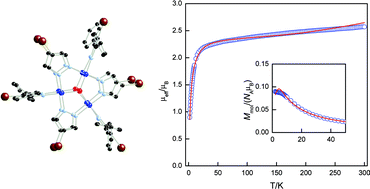Electronic structure and magnetic properties of a trigonal prismatic CuII6cluster†
Abstract
A combination of detailed magnetisation studies and electronic-structure analysis using broken-symmetry DFT is used to explore the electronic structure of a trigonal prismatic CuII6

- This article is part of the themed collection: The synergy between theory and experiment

 Please wait while we load your content...
Please wait while we load your content...